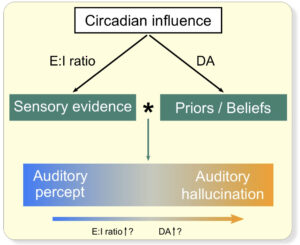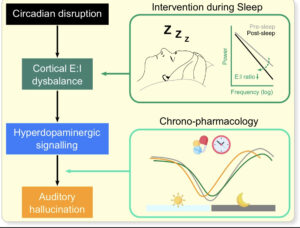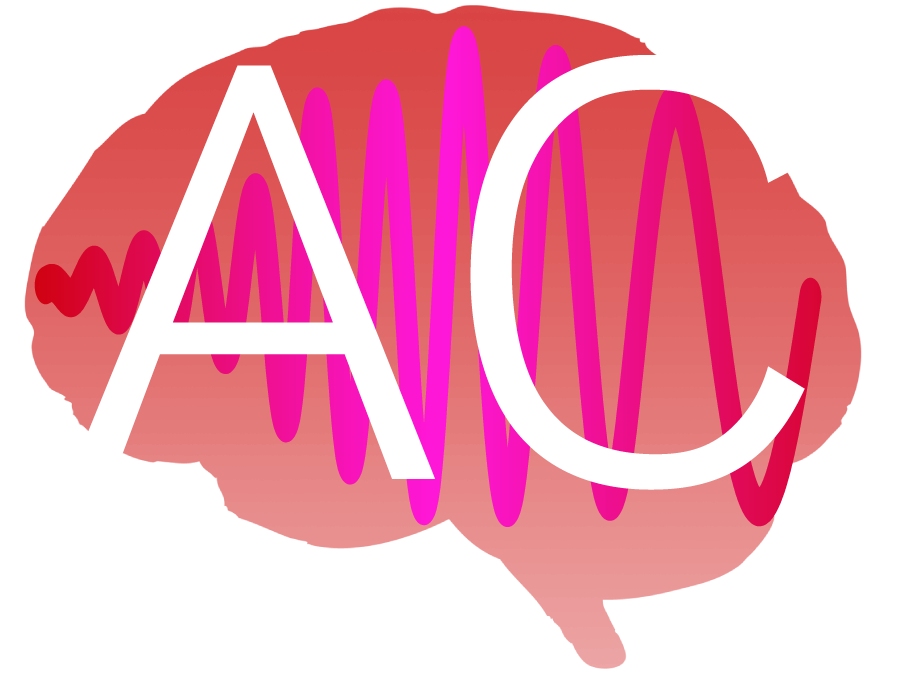I am happy and honoured that one of the leading hearing aid developers and manufacturers, Widex Sivantos Audiology (WSA), has agreed with University of Lübeck to fund 3 more exciting years of research at the Obleser lab! We will be jointly looking at the intricacies of how ageing listeners navigate a noisy world and its communication challenges.
Category: Auditory Neuroscience
As part of our increased efforts to understand the impact of chronobiology in sensation and perception, a new review article by senior researcher Hong-Viet Ngo in the lab and Jonas Obleser, together with psychiatrist Christina Andreou and chrononeurophysiologist Henrik Oster is forthcoming!


The paper summarises our (sketchy) knowledge on how circadian rhythms impact auditory hallucination propensity, and how key neural signatures E:I (dys-)balance and dopaminergic signalling jointly might contribute to hallucinations as a key symptom in psychosis. The paper has been accepted in the classic journal Acta Physiologica. A preprint version is available here.
Neural oscillations are a prominent feature of the brain’s electrophysiology and target variables in many speech perception studies. For the latest edition of the Springer Handbook Auditory Research – this time focused on speech perception – lab members Sarah Tune and Jonas Obleser teamed up to take stock of what has been learned about the functional relationship of neural oscillations and speech perception.
By focusing on core functions and computational principles, the chapter offers a parsimonious account of the stable patterns that have emerged across studies and levels of investigations.
You can find a preprint of the chapter here and the entire collection of chapters here.

Six years in our lab with the ageing, adapting, listening brain and mind center-stage have come to a successful close. Jonas’ ERC Consolidator grant had been granted during the Auditory Cognition lab’s tenure at the Max Planck Institute in Leipzig originally, and it has shaped our start and settling-in at the University of Lübeck ever since 2016.
Jonas: “In total almost 500 sessions of behaviour, EEG and fMRI recorded; more than 160 brave Lübeck folks and their brains followed longitudinally over two years; 25 publications put out; and not least two PhDs finished and five postdoc careers kickstarted — I am very grateful for the help of all these people, my host Institution University of Lübeck and the European Research Council (ERC) having made this all happen. Thank you all.”
All data will be or are already publicly available on OSF, and we will update our dedicated “AUDADAPT” project page once the final report is in.
Here’s a brand new PhD training opportunity, @dfg_public-funded, joint project of @ObleserLab at @UniLuebeck Germany, supervised by me, with star collaborator @GesaHartwigsen (@MPI_CBS) — starting next spring. Please be in touch. Please distribute widely. https://t.co/oTUEVVgQSG pic.twitter.com/L4DtFaqRJl
— Jonas Obleser (@jonasobleser) October 19, 2021
Very excited to announce that former Obleser lab PhD student Lea-Maria Schmitt with her co-authors *) is now out in the Journal Science Advances with her new work, fusing artifical neural networks and functional MRI data, on timescales of prediction in natural language comprehension:
“Predicting speech from a cortical hierarchy of event-based time scales”
*) Lea-Maria Schmitt, Julia Erb, Sarah Tune, and Jonas Obleser from the Obleser lab / Lübeck side, and our collaborators Anna Rysop and Gesa Hartwigsen from Gesa’s Lise Meitner group at the Max Planck Institute in Leipzig. This research was made possible by the ERC and the DFG.

Frauke Kraus, Sarah Tune, Anna Ruhe, Jonas Obleser & Malte Wöstmann demonstrate that unilateral acoustic degradation delays attentional separation of competing speech.
Unilateral cochlear implant (CI) users have to integrate acoustically intact speech on one ear and acoustically degraded speech on the other ear. How interact unilateral acoustic degradation and spatial attention in a multitalker situation?
N = 22 participants took part in a competing listening experiment while listening to an intact audiobook under distraction of an acoustically degraded audiobook and vice versa. Speech tracking revealed not per se reduced attentional separation of acoustically degraded speech but instead a delay in time compared to intact speech. These findings might explain listening challenges experienced by unilateral CI users.
To learn more, the paper is available here.
We are very excited to share that Obleserlab postdoc Sarah Tune has a new paper in Nature Communications. „Neural attentional-filter mechanisms of listening success in middle-aged and older participants“ is our latest and to-date most extensive output of the longitudinal ERC Consolidator project on adaptive listening in ageing individual (AUDADAPT).
This co-production with current (Mohsen Alavash and Jonas Obleser) and former (Lorenz Fiedler) Obleserlab members, takes an in-depth and integrative look at how two of the most extensively studied neurobiological attentional-filter implementations, alpha power lateralization and selective neural speech tracking, relate to one another and to listening sucess.
Leveraging our large, representative sample of aging listeners (N=155, 39–80 years), we show that both neural filter implementatins are robustly modulated by attention but operate surprinsingly independent of one another.
In a series of sophisticated single-trial linear models that include variation in neural filter strength within and between individuals, we demonstrate how the preferential neural tracking of attended versus ignored speech but not alpha lateralization boosts listening success.
To learn more, the paper is available here.


